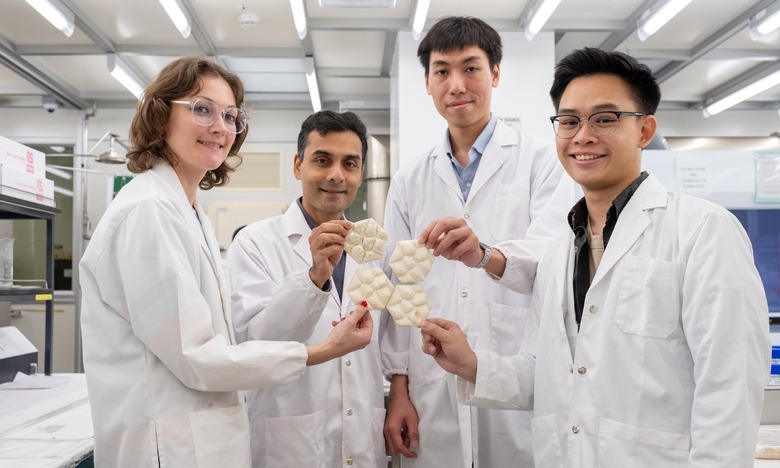Researchers Invented New Tiles That Keep Buildings Cool Without Electricity
Engineers in Singapore have developed a sustainable cooling tile made from mushrooms and bamboo. It's a new biodegradable building material that mimics elephant skin and can keep buildings cool without relying on air conditioning or electricity.
Created by a team at Nanyang Technological University (NTU), this innovative tile combines oyster mushroom mycelium with repurposed bamboo scraps from furniture shops. Molded into a surface that resembles the deeply wrinkled texture of elephant skin, the tiles are designed to slow heat absorption and increase surface moisture retention—two key factors that support passive cooling.
This bio-inspired approach addresses a major issue in construction: cement and synthetic insulation materials are significant sources of pollution and emissions. Cement alone accounts for either percent of global carbon dioxide emissions. As cities get hotter and energy demands surge, the need for low-carbon alternatives is more urgent than ever.
The science behind this sustainable cooling tile draws inspiration from nature. Despite their size and lack of sweat glands, elephants regulate body temperature through their highly wrinkled skin, which holds water and dissipates heat over time. The NTU team replicated that effect in the tiles, using biomimicry to enhance water retention and airflow. The result? A surface that stays cooler for longer, even in tropical conditions.
The fungal base is eco-friendly, porous, and lightweight—qualities that make it a surprisingly effective insulator. In lab tests, tiles placed on a hot plate absorbed heat more slowly and cooled more quickly than traditional flat tiles. Rain simulations showed water droplets pooling in the tile's textured surface, which helped accelerate evaporative cooling.
Growing each sustainable cooling tile takes about a month, which presents a challenge for mass production. However, researchers are working with a local startup to explore ways to scale manufacturing while experimenting with other fungi strains to optimize performance and durability.
Combined with other concrete alternatives, these cooling tiles could help usher in a new age of construction materials.
